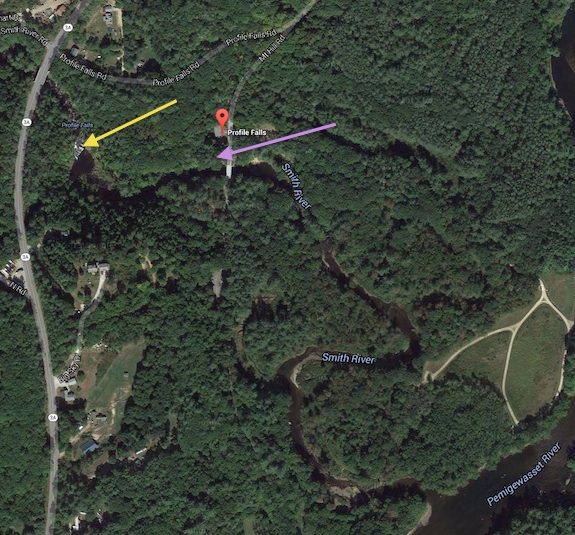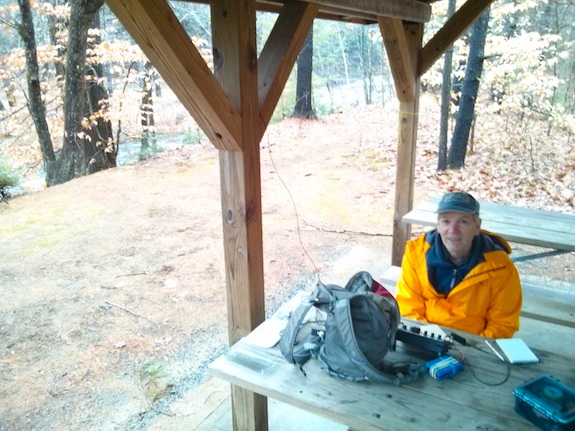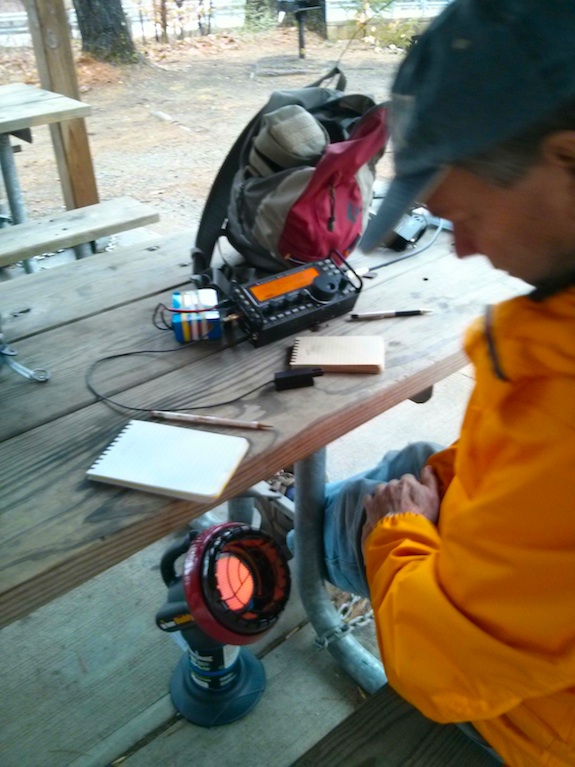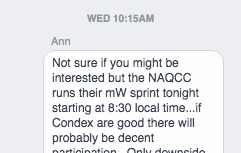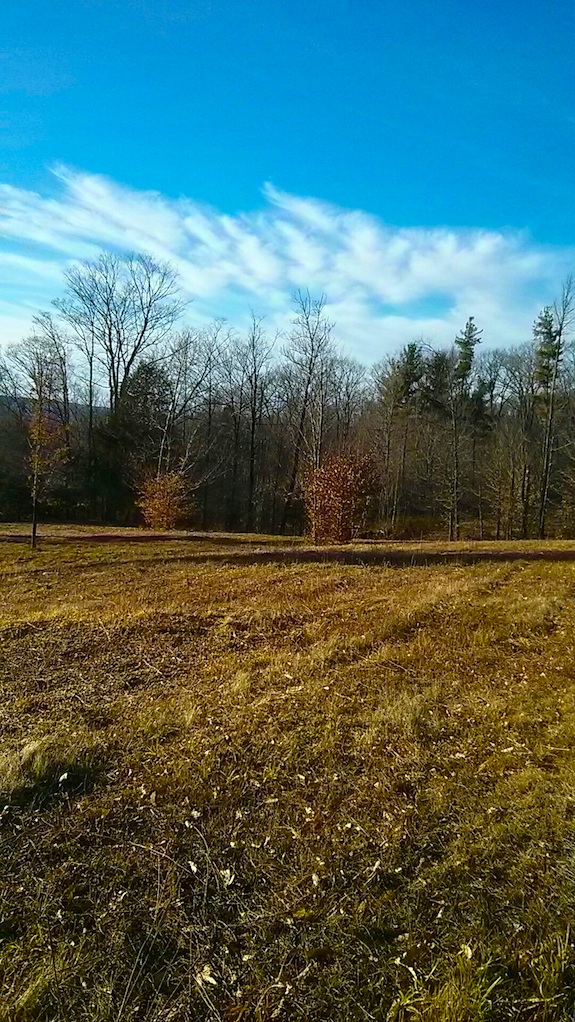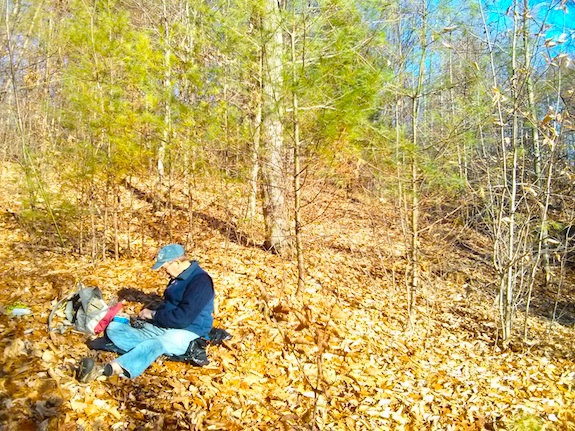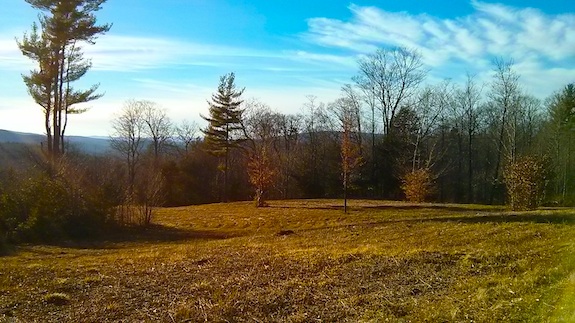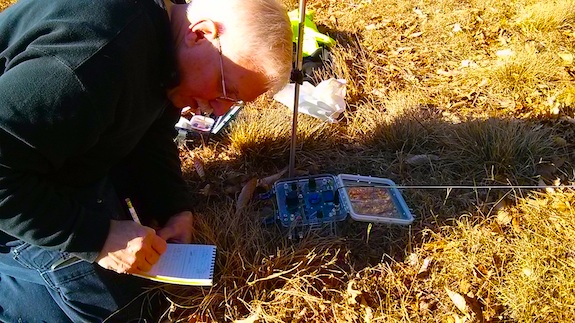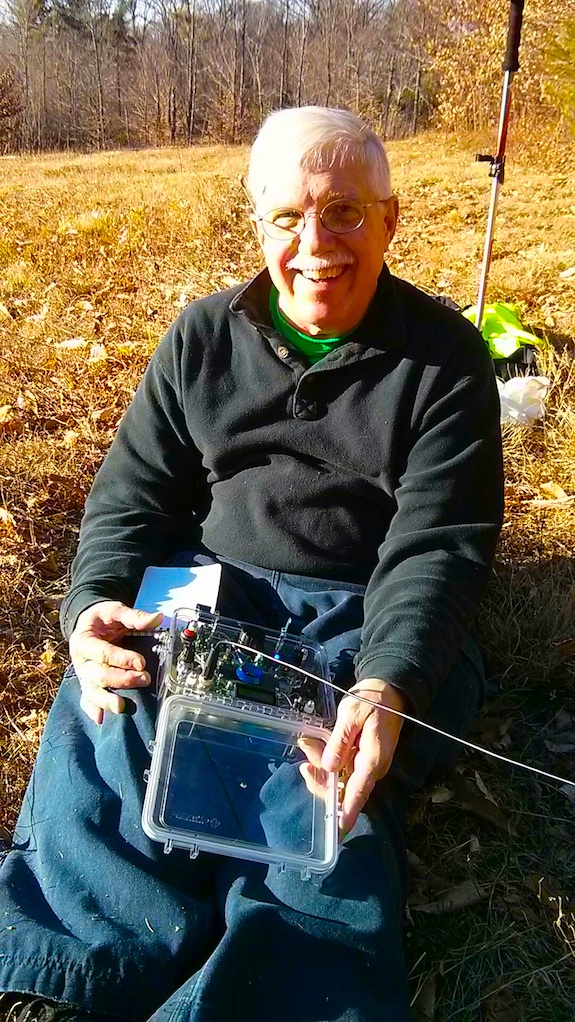If you had asked me two months ago if I’d be out in a snowless field in central New Hampshire kneeling on dry grass with just a partially zipped hoodie on the day after Christmas, I’d have thought you had taken a strong hallucinogenic drug.
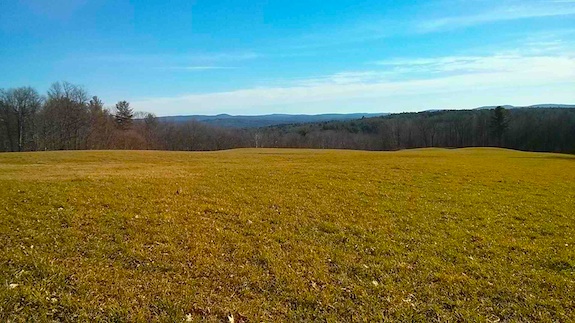
You could have spread a blanket and had a picnic lunch it was so warm in the sun. Here we are just four days past the winter solstice. Photo credit: Jim Cluett
By this time of year, the grass is almost always under a blanket of snow, not to be seen again until those luxurious warm days of mid-March when the sun has already climbed halfway up into the sky.
But yesterday I was out once again with Jim Cluett, W1PID, and my gorgeous German Shepherd dog Lady. One of the strongest El Niño weather events in living memory has aimed a fire hose of warm air at us. After the past two brutal winters of day-after-day-after-day of snow and bitter cold, I’m not complaining. I needed a break.
When Jim asked where I wanted to go earlier on the phone, I told him someplace I’d not been before. He was kind enough to share one of his very special places, the open fields just north of Hunkins Pond in Sanbornton, NH.
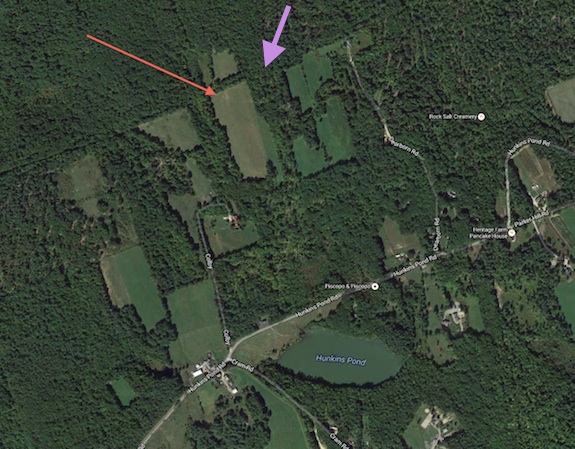
The tip of the red arrow is where I operated from. The tip of the purple arrow is where the granite bedrock with the continental glacial striations is located. Image credit: Google Maps (C) 2015
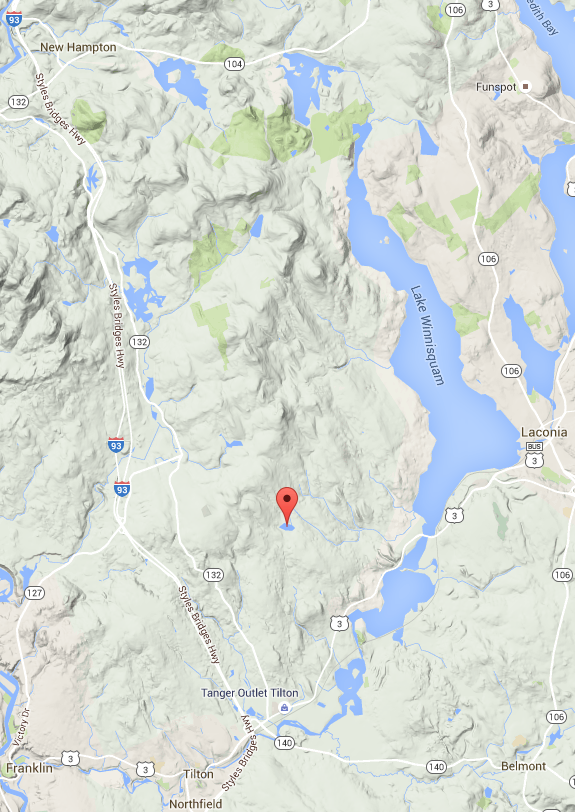
The red balloon is Hunkins Pond. This is a regional view of the area showing the relationship of Sanbornton to New Hampton to the north and Tilton to the south. Image credit: Google Maps (C) 2015
Over the past few days we had quite a bit of rain and the Class VI road that leads up to the fields was choked with large puddles of water. Jim tried to use his favorite walking stick harvested by his daughter from a beaver dam to drain one, but I told him he needed a Case backhoe. He gave up after a minute.
Lady’s a perfect hiking partner. She doesn’t run off because she knows she’s away from home and doesn’t want to get lost. Some dogs will chase anything and disappear. When you stop for any reason, she often wants to turn around and head back to the car.
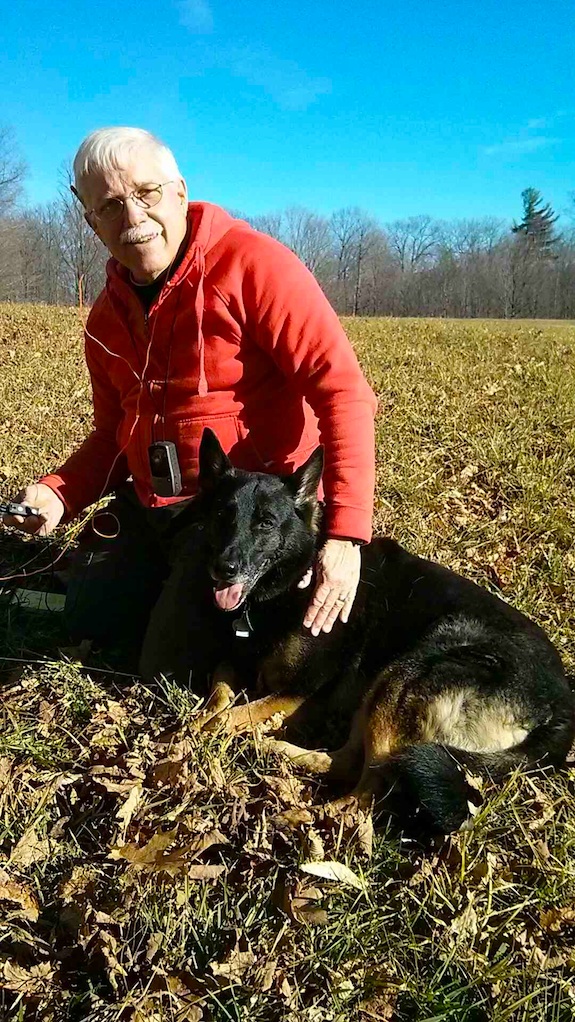
Lady’s drop-dead gorgeous. She’s as loyal as any dog you’d ever meet. Photo credit: Jim Cluett
On this day, she was doing a good job of getting tangled in the diving string Jim and I use as halyards to get our antennas into the branches of the trees that line the open fields.
Today was the day I would use my new yellow braided nylon line that comes on the most ideal finger spool I’ve ever seen. Jim has had one for two years and he knew it would make the perfect Christmas present for me.
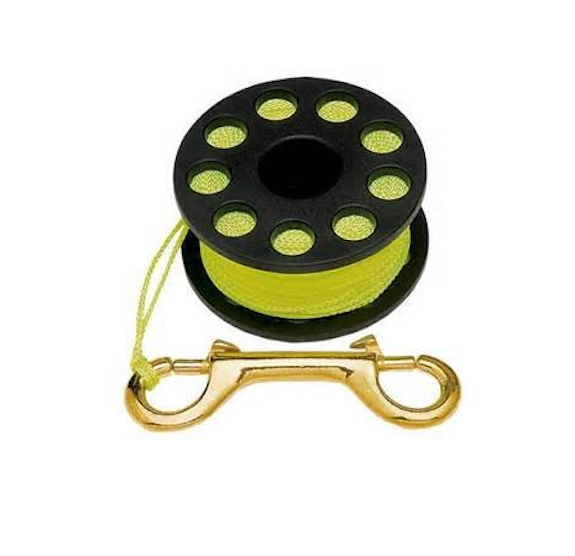
You’ll NEVER find a better spool for outdoor radio. CLICK this image NOW to buy it. Image credit: Amazon.com
I wasted no time getting my antenna up. Neither did Jim as he set up about 200 feet east of me on the edge of the 5-acre field.
I decided to put up my resonant 20-meter dipole antenna and was able to get it to hang vertically with no problem. I connected my MFJ 20-meter Cub radio that’s housed in a water-resistant box. It’s equipped with a digital frequency readout and a delightful electronic touch keyer. Lady was relaxing next to me.
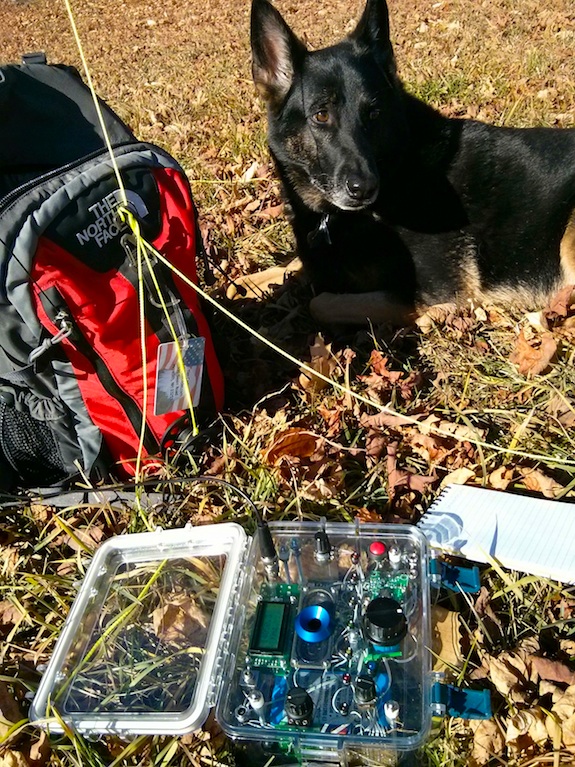
Lady would walk over hot coals for me, I think. She’d do it for sure for a dog biscuit. Photo credit: Tim Carter – W3ATB
I heard lots of stations, but no one could hear my 1 watt or so signal. Not wanting to get skunked, I got out my trusty HB-1B quad-band radio. By this time Jim had already completed three QSOs and was hovering over me wondering if I’d ever make a contact. He didn’t say this, but I felt it. He’s so very polite and patient.
“I just worked your buddy Craig, WB3GCK, in Pennsylvania. He asked if you were out with me. He was out too testing an antenna setup.”
Here’s Jim’s log for the day:
- 1712 HK1MW 18.076 579 599 Colombia
- 1717 CO90IARU 21.024 599 599 Cuba
- 1720 WB3GCK 18.072 569 599 PA Craig 2-way QRP
As I tuned the HB-1B, I immediately heard a very strong station and copied his call sign the first time, YV5DTJ. Oh, that would be a nice treat the day after Christmas – a nice outdoor DX log entry!
He was in a QSO with K8EHE. I was waiting for them to finish so I could pounce. I gave up and went hunting.
Within seconds I snared W4AFB, Keith down in Oviedo, FL. I thought he was ten feet away his signal was so strong. He gave me a 559 which I was very pleased with. We exchanged SKCC numbers, his being 7169S. At one point in the QSO he said, “LOTS OF QRN” so I was quite happy he pulled me out of the ether allowing me to avoid the skunk.
By this time it was time to pack up and head back. We walked east along an ancient range road that goes back hundreds of years. Within minutes I spied a piece of exposed granite bedrock in the middle of the road sporting a large glacial striation or scratch.
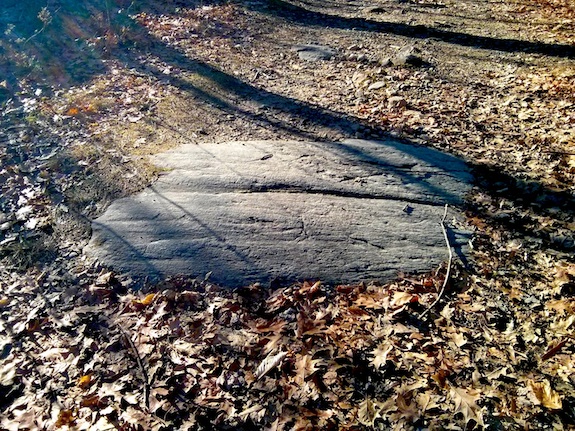
The deep gouge in the granite bedrock was caused by the massive continental glacier grinding across the stone. Photo credit: Tim Carter – W3ATB
Just 12,000 years ago the spot where I was standing was covered under two or three-thousand feet of solid ice that stretched back up to the North Pole. You can read all about this in a recent letter to the editor I wrote if you’ve got an interest in geology.
Jim, Lady and I walked across another field, down through some woods and across three time-worn stones walls to get back to the car.
It was a fulfilling day and quite possibly the last outing of 2015 as a major winter snowstorm was forecast to hit us in 72 hours. Prior to that rain would be pounding the dry grass and leaves that carpeted the quiet fields above Hunkins Pond.
Do yourself a favor and stroll through them as we did. You’ll not regret it, especially if it’s a brilliant autumn day.

